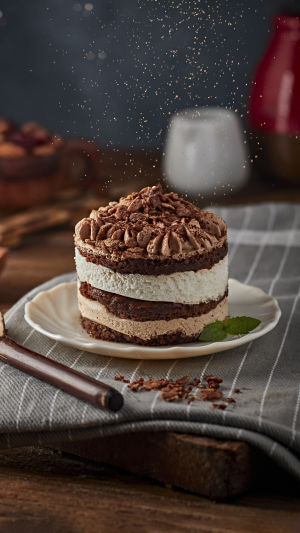Chocolate cake is more than just a dessert; it's a universal symbol of celebration, comfort, and indulgence. This essay delves into the nuances of making a chocolate cake, ensuring that even novice bakers can create a masterpiece.
We'll start with the critical step of choosing the right chocolate, as it lays the foundation for flavor and quality.
<h3>Choosing the Right Chocolate</h3>
The journey to a perfect chocolate cake begins with selecting the right chocolate. The market is flooded with various types, from dark and rich to sweet and milky. For baking, quality matters more than quantity. Superior chocolate with a higher cocoa content, typically above 60%, is ideal. It ensures a profound depth of flavor that supermarket brands might not offer. Look for brands that focus on the origins of their cocoa beans, as single-origin chocolates can provide unique tasting notes, ranging from fruity to nutty, enhancing the cake's complexity.
<h3>The Baking Process</h3>
<b>Ingredients and Preparation</b>
The magic of a chocolate cake lies not only in the quality of chocolate but also in the balance of ingredients. A standard recipe might include:
1. High-quality chocolate (as selected in the previous step)
2. Unsalted butter for richness
3. Sugar to sweeten and enhance the chocolate's natural flavors
4. Eggs, which provide structure and moisture
5. Flour, the cake's backbone
6. Baking powder or baking soda for leavening
7. Salt to balance the sweetness
8. Vanilla extract to add depth
9. Milk or buttermilk to tenderize the crumb
<h3>Making the Batter</h3>
The process of making the batter involves several crucial steps:
1. Commence by delicately melting the chocolate and butter together through the gentle heat of a double boiler or microwave. The objective is to attain a seamless, uniform mixture, ensuring the chocolate doesn't overheat in the process.
2. Whisk together the flour, leavening agents, and salt in a separate bowl, ensuring they are evenly distributed.
3. In a spacious mixing bowl, whisk the eggs and sugar until they reach a light and airy consistency, aiding in the cake's fluffiness. Next, blend in the vanilla extract along with the melted chocolate and butter mixture.
4. Gradually add the dry ingredients to the wet mixture, alternating with milk or buttermilk. It should be done gently to avoid overmixing, which can lead to a dense cake.
5. Pour the batter into the prepared pans, smoothing the top with a spatula. The cake should be baked in a preheated oven until a skewer inserted into the center comes clean. Baking times may vary based on the oven and the size of the cake pan, so it's essential to keep an eye on it, especially towards the end of the estimated baking time.
6. Allow the cake to cool in the pan for a few minutes before transferring it to a wire rack to cool completely. It is crucial for the cake's texture and makes decorating easier. Once cooled, the cake can be frosted with a chocolate ganache or buttercream, turning it into an irresistible treat.
Creating a chocolate cake from scratch is a truly rewarding experience that beautifully combines the science of baking with the art of flavor. By selecting high-quality chocolate and skillfully balancing the ingredients, you can achieve a cake that is not only moist and rich but also boasts a delightful depth of chocolate flavor. The process of making a chocolate cake allows you to harness your creativity and expertise to create a treat that is both delicious and visually stunning.





